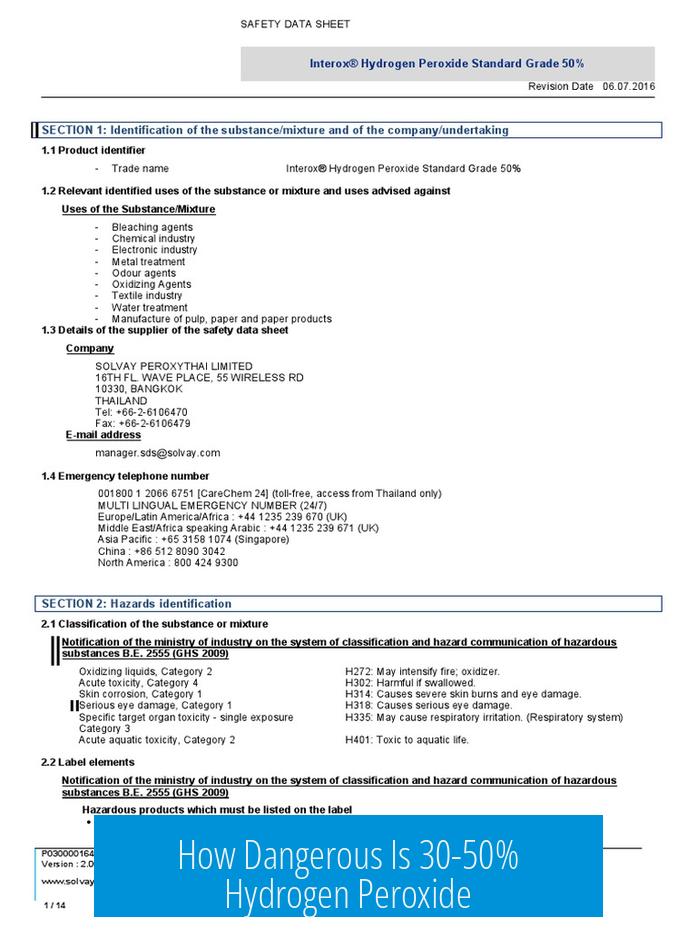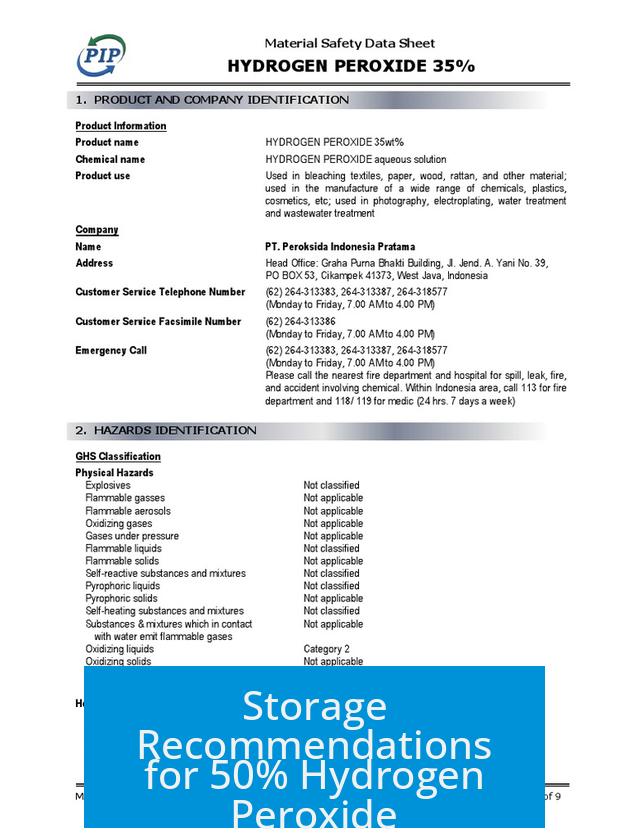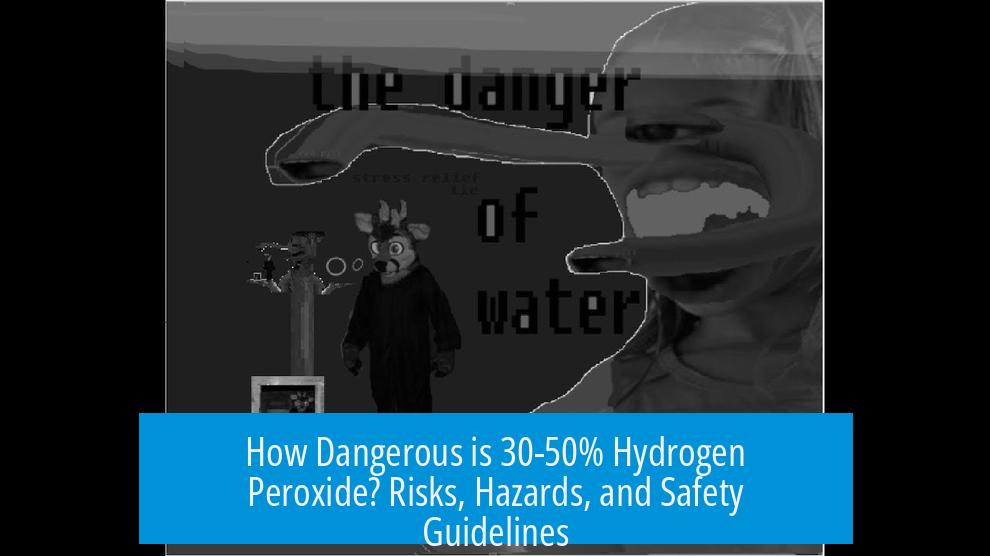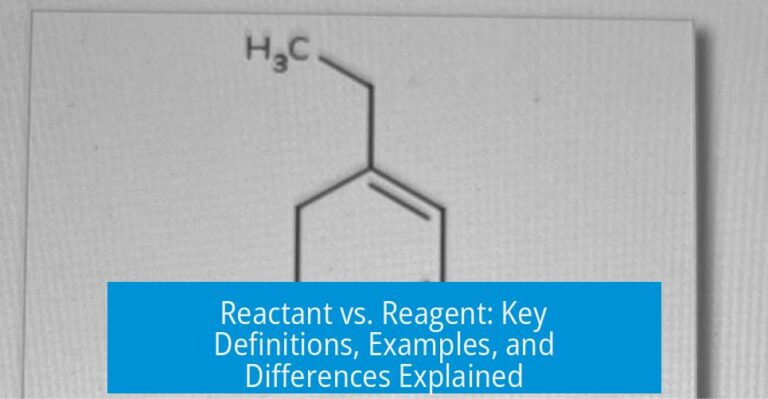How Dangerous Is 30-50% Hydrogen Peroxide?

Hydrogen peroxide (H2O2) at concentrations of 30-50% poses significant safety risks for handling, storage, and use due to its reactive, corrosive, and potentially explosive nature. The hazard increases sharply between 30% and 50% concentrations. While 30% solutions are common in laboratories and industrial settings, 50% is much more reactive and unstable, requiring strict safety protocols.
General Hazards of Concentrated Hydrogen Peroxide
Concentrated hydrogen peroxide is a powerful oxidizer. It can decompose violently, releasing oxygen gas rapidly, which may cause explosions or fires. Heating or contact with flammable materials increases this risk. Although not classed as a massive explosion hazard, it carries a substantial danger. Additionally, hydrogen peroxide is strongly corrosive. It damages skin and other tissues on contact, necessitating protective equipment during handling.
- The reactivity intensifies with concentration and impurities.
- Used in rocket engines for its strong oxidizing ability.
- Explosive potential grows if mixed with reducing agents or heated.
Understanding the Risks of 30% Hydrogen Peroxide
30% H2O2 represents a typical “concentrated reagent” used in many chemical applications. It can cause localized damage on skin almost immediately after contact. The peroxide decomposes within the dead skin layer, releasing oxygen as foam and creating visible white marks.
Prolonged exposure deepens tissue damage and increases pain, notable around sensitive areas such as fingernails. Initial contact may lack pain, but discomfort intensifies over hours. Accidental spills should be rinsed off with water immediately.
Despite its risks, 30% H2O2 is considered moderately stable compared to stronger solutions. Users recommend:
- Wearing gloves and eye protection
- Rinsing skin rapidly after contact
- Using 30% concentration where possible to balance effectiveness and stability
Heightened Dangers at 50% Hydrogen Peroxide
The dangers increase sharply at 50% concentration. This solution is far more reactive, making it capable of causing severe skin injuries with more intense foaming and chemical burns.
Additionally, 50% H2O2 can react violently with common materials:
- Contact with reducing agents may cause fires or detonations
- Cleaning spills with rags risks ignition after water evaporation
- Highly corrosive when mixed with mineral acids
It is less stable and decomposes rapidly, building up oxygen gas pressure inside containers. Improper storage can lead to bursting glass bottles and dangerous releases of oxygen.
Storage Recommendations for 50% Hydrogen Peroxide

- Store in a plastic bottle, avoiding glass to prevent shattering
- Keep refrigerated or frozen to slow decomposition
- Do not fill the container to the brim, allowing gas expansion
- Periodically vent the container to release accumulated oxygen
These precautions are vital due to 50% hydrogen peroxide’s unstable nature and potential for explosive decomposition.
Reactive Hazards and Corrosive Effects
Hydrogen peroxide accelerates its own decomposition when in contact with metals because metals catalyze the reaction. This decomposition releases large volumes of oxygen gas and heat, creating fire or explosion risks near flammable materials.
When combined with acids, especially mineral acids, hydrogen peroxide becomes even more corrosive, leading to severe chemical burns and damage to surfaces.
Experiential Observations and Practical Usage
People using 30-35% H2O2 in industrial or laboratory tasks report immediate skin sensations such as fizzing and burning upon accidental contact. Chemical burns develop quickly without urgent rinsing.
Applications like fossil cleaning often use 35% H2O2 due to its oxidizing ability. The reaction can produce temperatures from room level up to above 200°F, underscoring the need for careful handling and personal protective equipment (PPE).
Safety Equipment and Precautions
- Always wear gloves, goggles, and protective clothing
- Avoid mixing with incompatible materials
- Work in well-ventilated areas to avoid buildup of oxygen gas
- Use concentrations appropriate to the task; avoid 50% unless absolutely necessary
Summary of Key Points
- 30% hydrogen peroxide is hazardous but relatively stable; causes painful chemical burns and foaming on skin.
- 50% solution is significantly more reactive, unstable, and prone to explosive decomposition.
- Contact with metals, reducing agents, and acids increases risk of violent reactions.
- Proper storage involves plastic containers, refrigeration or freezing, and venting to prevent oxygen buildup.
- Use appropriate PPE and always rinse skin immediately after exposure.
- 30% concentration is recommended for general use; 50% reserved for specialized industrial or scientific purposes.





Leave a Comment